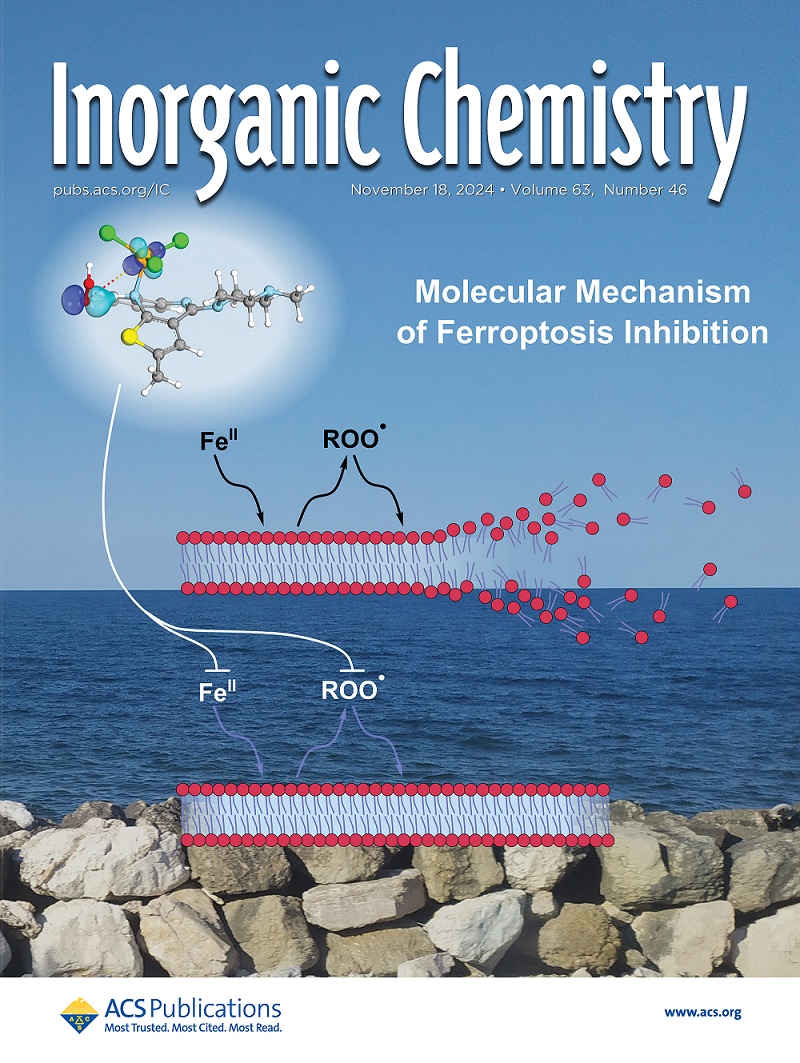Incorporation of Tellurium into a NNN Pincer Ligand Framework and Consequences on Coordination Behavior.
IF 4.3
2区 化学
Q1 CHEMISTRY, INORGANIC & NUCLEAR
引用次数: 0
Abstract
Secondary bonding interactions such as hydrogen-bonding have emerged as beneficial design elements in the construction of molecular catalysts. Here we examine the incorporation of chalcogen-bonding units in the form of benzotellurazole moieties into an NNN chelating framework. A series of substituted 2,6-bis(benzotellurazole)pyridines (NNNR, R = H, tBu, CF3, and Me) have been synthesized through double deoxygenative cyclization of pyridine diamide precursors. The new NNNR species are fully characterized in solution and the solid state and demonstrate planar structures consistent with related pyridine-bis(benzoxazole) chelates. Coordination complexes of Fe and Mn have been identified and structurally characterized demonstrating intermolecular chalcogen bonding between Te and Cl. Despite this promise, the compounds display very low solubility in common solvents and are found to readily demetalate in the presence of coordinating solvents. To investigate the factors contributing to the weak metal binding, density functional theory calculations are performed. The calculations demonstrate unfavorable energetics associated with the planar syn,syn conformation required for metal binding, which is a consequence of steric interactions between the pyridine unit and the large Te atoms of the benzotellurazole.碲在NNN钳形配体框架中的加入及其对配位行为的影响。
二级键的相互作用,如氢键,已成为分子催化剂结构中有益的设计元素。在这里,我们研究了以苯并tellurazole基团的形式将硫键结合到NNN螯合框架中。通过吡啶二胺前体双脱氧环化,合成了一系列取代的2,6-双(苯并tellurazole)吡啶(NNNR, R = H, tBu, CF3, Me)。新的NNNR在溶液和固体状态下都得到了充分的表征,并表现出与相关的吡啶-双(苯并恶唑)螯合物一致的平面结构。Fe和Mn的配位配合物已经被确定并进行了结构表征,表明Te和Cl之间存在分子间的硫键。尽管有这样的前景,但该化合物在普通溶剂中的溶解度很低,并且在配位溶剂存在下容易脱金属。为了研究导致弱金属结合的因素,进行了密度泛函理论计算。计算结果表明,由于吡啶单元与苯并tellurazole的大Te原子之间的空间相互作用,金属结合所需的平面syn构象具有不利的能量学。
本文章由计算机程序翻译,如有差异,请以英文原文为准。
求助全文
约1分钟内获得全文
求助全文
来源期刊

Inorganic Chemistry
化学-无机化学与核化学
CiteScore
7.60
自引率
13.00%
发文量
1960
审稿时长
1.9 months
期刊介绍:
Inorganic Chemistry publishes fundamental studies in all phases of inorganic chemistry. Coverage includes experimental and theoretical reports on quantitative studies of structure and thermodynamics, kinetics, mechanisms of inorganic reactions, bioinorganic chemistry, and relevant aspects of organometallic chemistry, solid-state phenomena, and chemical bonding theory. Emphasis is placed on the synthesis, structure, thermodynamics, reactivity, spectroscopy, and bonding properties of significant new and known compounds.
 求助内容:
求助内容: 应助结果提醒方式:
应助结果提醒方式:


